The web browser is by far the most important piece of software on your PC. Unless you’re at a workstation crunching numbers or editing Hollywood blockbusters, you probably spend the majority of your computer time staring at a webpage.
That’s why it’s important to have the best tool for the job. So much has changed since our last browser showdown in early 2019. Not only is Internet Explorer out, but classic Edge is about to be replaced by Chromium-based Edge. The latter is not officially a part of Windows yet, but you can already download it manually to replace the original (and basically terrible) Edge. For this latest PCWorld browser showdown, we’ve dumped classic Edge and replaced it with the stable version of Chromium Edge.
There are tons of browser options out there but real choice is limited. With Edge now using Chromium, three of our four browsers in this showdown are based on Google’s open-source project. Even the two most talked about “alternative” browsers, Brave and Vivaldi, are based on Chromium.
We won’t get into the argument here, but suffice to say, from our point of view this is bad. The web thrives when multiple engines adhere to independent web standards, not when developers target a single browser engine. We’re not quite returning to something like the age of Internet Explorer 6. Apple’s Safari browser (based on Webkit) is really the only choice on iOS, for example. Still, it’s concerning.
Let’s take a look at the four major options—Chrome, Edge, Firefox, and Opera—to see how they stack up in 2020. Last time around, Opera topped our charts as the best browser to get. This year, Edge (yes, Edge) is our top pick, but don’t get too excited. You’re not losing much, if anything, if you stick with Chrome instead. Read on to find out why.
(If none of these internet browsers strike your fancy, head over to PCWorld’s roundup of 10 intriguing alternative browsers.)
Browsers in brief
Chrome
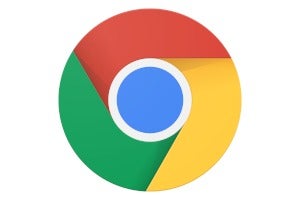 Google
GoogleA perennial favorite, Google Chrome tops the metrics charts of both StatCounter and NetMarketShare by a huge margin. Google’s browser has built a dedicated fan base thanks to its massive extensions library, and the fact that it just gets out of your way to put the focus on web content, not the browser’s trimmings.
Chrome isn’t quite as simplistic as it once was, but it’s still very easy to use. There isn’t much to Chrome except a huge URL bar—known as the OmniBar—plus a space for extensions, a bookmarking icon, tabs, and that’s it.
Yet Google still finds a way to hide all kinds of features inside the browser, including deep integration with Google’s services. It can sync bookmarks, passwords, open tabs, and more across devices. Chrome also has multi-account support for family PCs, a built-in PDF viewer, built-in Google Translate functionality, a task manager, and the always handy Paste and go context menu item.
If there’s one complaint people have about Chrome it’s that the browser eats up available memory. Our browser testing in 2015 showed that Chrome was definitely a memory beast, but these days the beast is much more domesticated.
Firefox
 Mozilla
MozillaAnyone who loves extensibility but wants greater privacy should look at the open-source Mozilla Firefox. It’s also the only non-Chromium option in this round-up. Firefox paved the way for other browsers to become extensible, and its extensions architecture offers plenty of choice for users. Firefox also has a sync feature to see open and recent tabs, browsing history, and bookmarks across multiple devices.
Firefox 74 is an excellent browser, and continues the Quantum era that started with version 57. Quantum brought a new and updated design with refreshed icons, and a new library section that houses your history, pocket reading list, downloads, and synced tabs. Firefox also has a task manager, screenshot tool, and the ability to use Windows 10’s native sharing tool.
Where Firefox has really stood out in recent years is with the browser’s incognito mode. All browsers have a private mode that lets you browse without any of your activity being logged in your saved history. But most of the time these private modes still allow websites to track your activity for that specific session. Firefox does away with this by including ad and tracker blockers when using incognito mode. It also supports an optional Facebook Container extension that prevents the social network from tracking you across the web.
Opera
 Opera
OperaBefore Chrome, Opera was a popular choice among power users.
Opera is really one of the more under-rated browsers around. It comes with a built-in VPN—though we don’t recommend using it. It also has built-in ad and tracker blocking, a snapshot tool, a unit converter for time zones and currency, and the mobile versions of Opera come with a built-in cryptocurrency wallet.
Opera also has its own take on the social sidebar with one-click access to services such as WhatsApp, Facebook Messenger, and Telegram. Like Chrome and Firefox, Opera also has cross-device syncing features.
Microsoft Edge
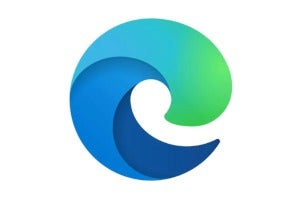 Microsoft
MicrosoftMicrosoft Edge is dead, long live Microsoft Edge. Edge is now a Chromium-based browser. The new version isn’t bundled with Windows 10 at this writing, but installing it from Microsoft’s site will automatically replace legacy Edge with the new Chromium browser on the desktop.
Performance with Chromium Edge is on par with Chrome and Opera, and it also has similar functionality. That means extensions from the Chrome Web Store are available, but not by default. As with classic Edge, extensions come from the Microsoft Store, but it can be set to install Chrome extensions by typing edge://extensions into the URL bar and pressing Enter. Next, click the Allow extensions from other stores button, select Allow in the pop-up window that appears, and then visit the Chrome Web Store and use it just like on Chrome.
We expect Microsoft to continue to push the Microsoft Store with extensions for Edge. These efforts are most likely in vain, however, as the Chrome Web Store is available to Edge users if they want it, and developers have little incentive to add their work to Microsoft’s store.
As with other Chromium browsers, Edge can sync open tabs, bookmarks, saved passwords, and browsing history across multiple devices. Currently, Chromium Edge lacks many of the Windows 10 features the old version had, such as integration with OneNote and Cortana. Microsoft does plan on bringing out a new feature soon called Collections that can “collect, organize, share, and export web content to Word or Excel.”
Right now, Edge is fairly plain, but that’s normal for a new browser. As Chromium Edge matures we expect to see Microsoft extend the browser’s capabilities.
Benchmarks
With the overview of our four contestants out of the way, let’s get down to business. To find out which browser is worthy of your bandwidth in 2020 we used a variety of testing tools.
We largely stuck to our typical testing regimen, but that is set to change in upcoming browser showdowns. A number of the tests we use have been unsupported for years, and it’ll soon be time to shake up our testing approach.
For this round we added WebKit’s JetStream 2.0, which was released in March 2019. JetStream 2 contains a lot of the tests from JetStream 1.1. It also borrows from newer benchmarks such as WebKit’s Ares-6 and Web Tooling by the V8 team (V8 is the JavaScript and WebAssembly engine for Chromium). WebKit said it also drew inspiration from Mozilla’s Kraken. Anyone who wants to get into the details of JetStream 2 should check out Webkit’s blog post.
In addition to JetStream 2, we used JetStream 1.1 to maintain comparisons to previous runs of the showdown one last time. We also kept the now-unsupported Octane 2.0 and SunSpider 1.0.2 benchmarking tools. Then we turned to WebXPRT 3 and Speedometer to test the browsers under simulated web app workloads.
Finally, we took a look at CPU and RAM usage by loading a set of 20 websites in a single window in quick succession. Once all tabs began loading, we waited 45 seconds, and then checked the CPU and RAM usage. The idea was to see the amount of system resources the browser used during a heavy workload.
For the tests we left each browser in its default state. There are no extensions running, no account sign-ups, nor was there any deliberate tinkering with settings. It’s just raw browser action.
Our test rig was an Acer Aspire E 15-575-33BM laptop loaded with Windows 10 Home, version 1909. The laptop also has a 1TB hard drive, 4GB RAM, and an Intel Core i3-7100U. Each browser was tested over an ethernet connection.
The performance picture
Firefox came out of this showdown a browser of extremes. As we’ll see, it either wins a particular performance test or comes in dead last. This is most likely a result of our current browser monoculture. When a Chromium browser wins a particular category, its two cousins aren’t far behind. Nearly every Chromium-based victory was one of degrees between the three amigos, which inevitably pushes Firefox towards the back.
For all of the benchmarks, we ran the test three times in succession, except for WebXPRT 3 and our homegrown 20-tabs torture test. Each time we ran the test we relaunched the browser window. We then took the average score from the three runs.
Let’s start with JetStream 2, the newest addition to our testing regimen. Our top winner for this round was Edge, but as we said it’s hardly a resounding victory with Chrome and Opera not that far behind. Firefox performed abysmally in this test compared to its counterparts.
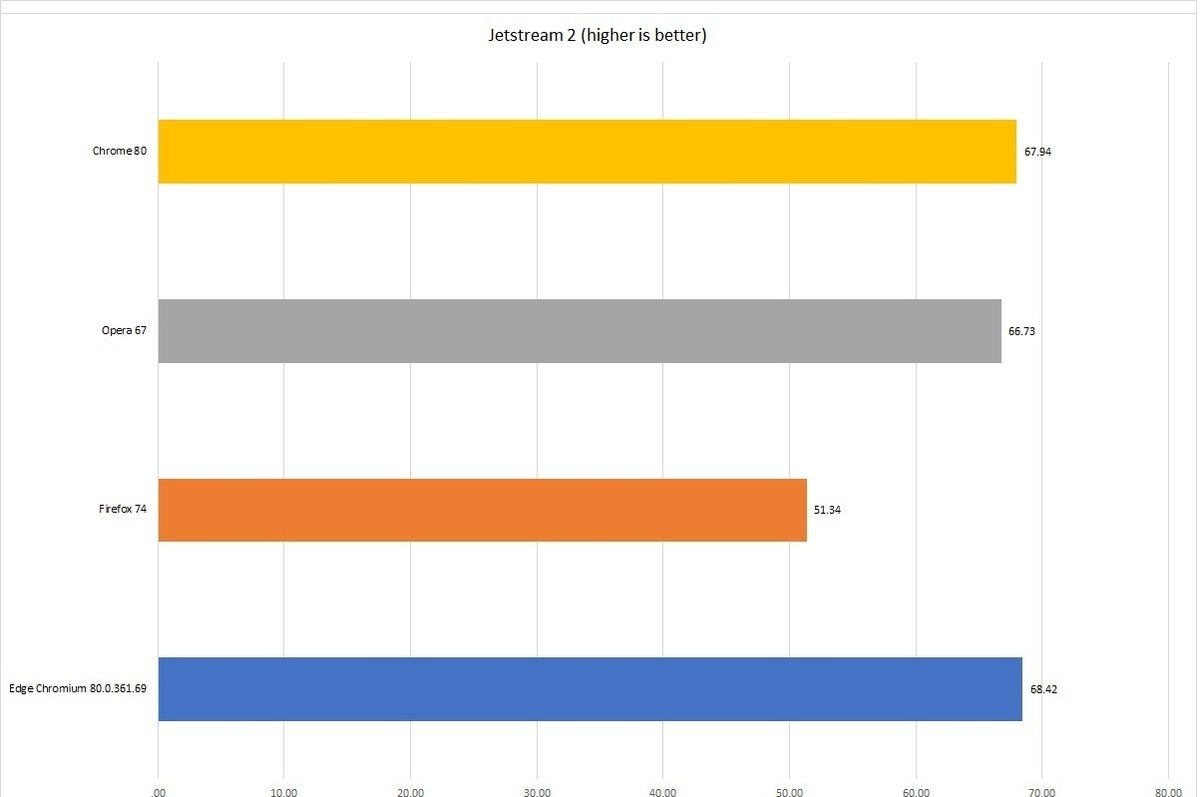 Katherine Stevenson / IDG
Katherine Stevenson / IDGLooking at both JetStream 1.1 and SunSpider, Firefox won top marks. It won the SunSpider test handily (lower is better) with Edge coming in second. Interestingly, Edge was quite a few seconds faster than the other two Chromium browsers. Firefox was marginally better than in our 2019 outing, shaving 8 milliseconds off its score—though that is within the margin of error. Chrome and Opera weren’t even close to Firefox, but they did cut down their scores by more than 100ms. So good job to the V8 team.
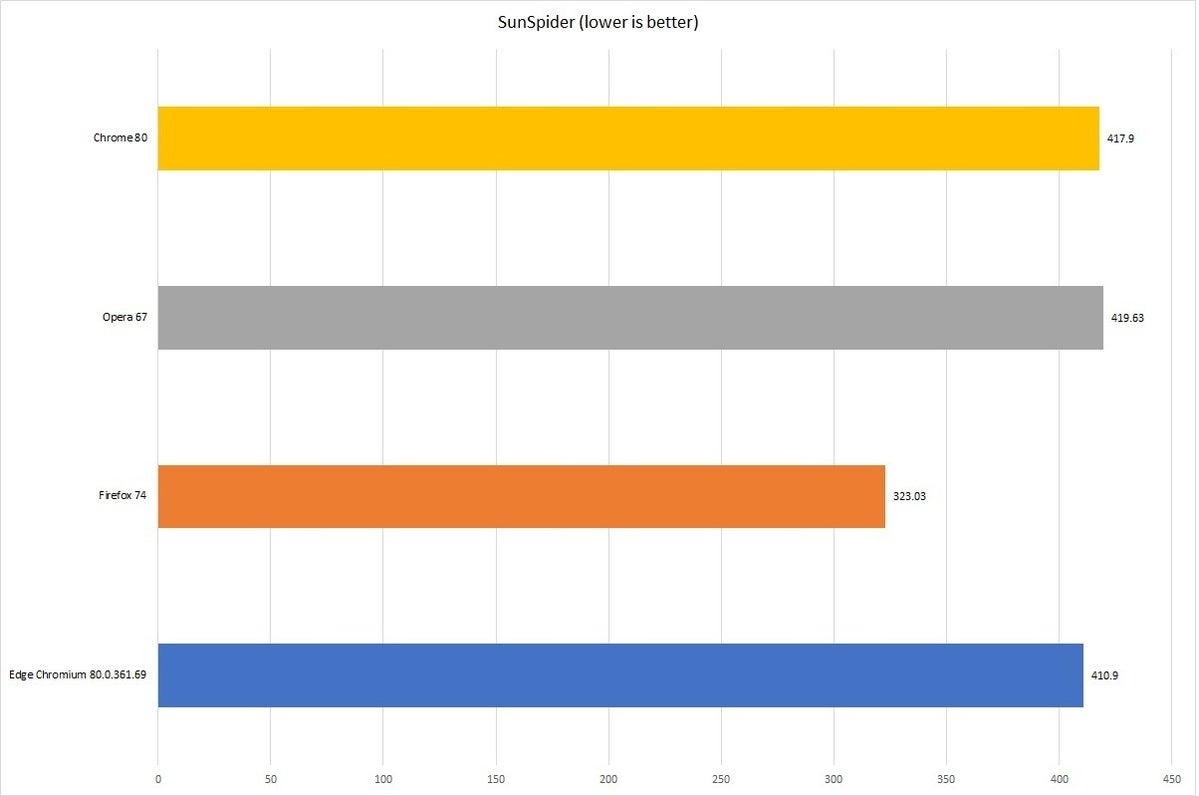 Katherine Stevenson / IDG
Katherine Stevenson / IDGFirefox’s JetStream 1.1 score (higher is better) wasn’t any better this time around than its previous runs, but the other browsers either didn’t improve enough (Chrome and Opera) or changed browser engines (Edge). That puts Firefox at the top spot for not sucking as much as Chromium.
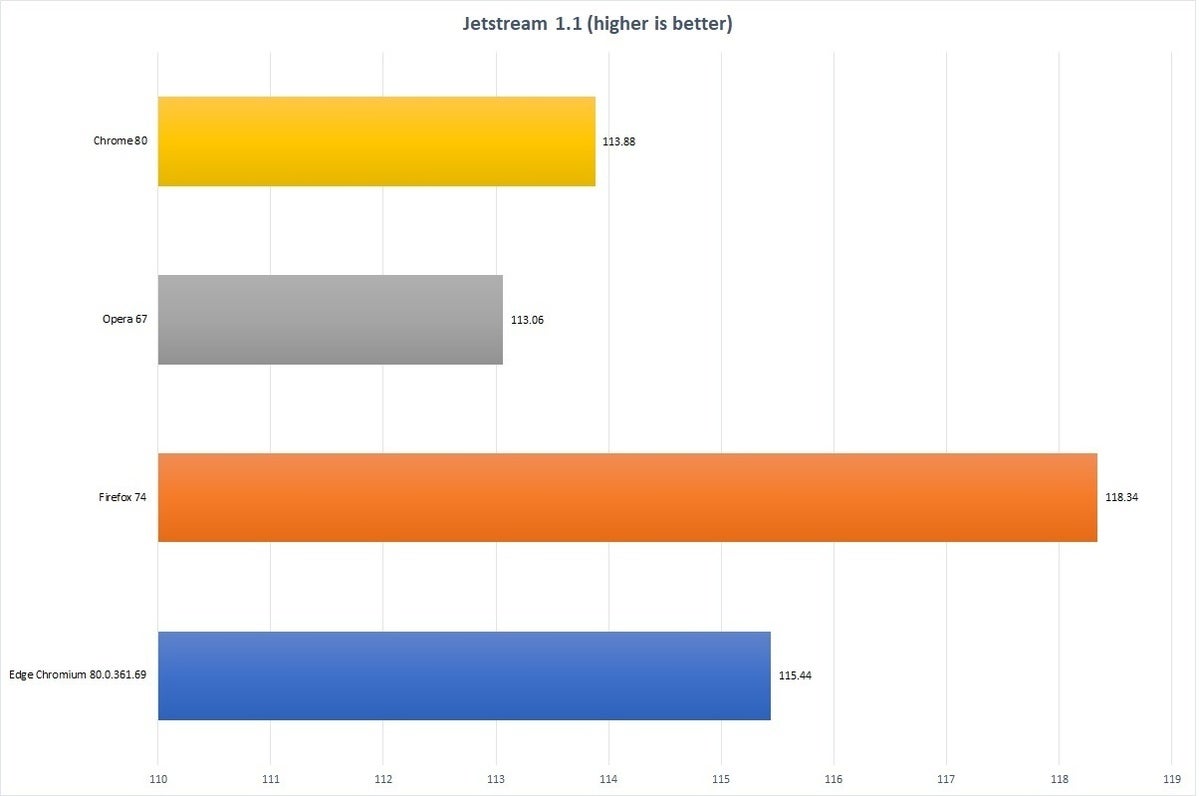 Katherine Stevenson / IDG
Katherine Stevenson / IDGFor Octane 2.0, which is also no longer supported, Edge grabbed another victory. Notice, however, that it’s only marginally better than Chrome. Opera, meanwhile, was out to lunch compared to its brethren, and Firefox was pushed towards the back. Mozilla’s score is about the same as it’s always been, but the Chromium browsers improved significantly compared to the 2019 outing.
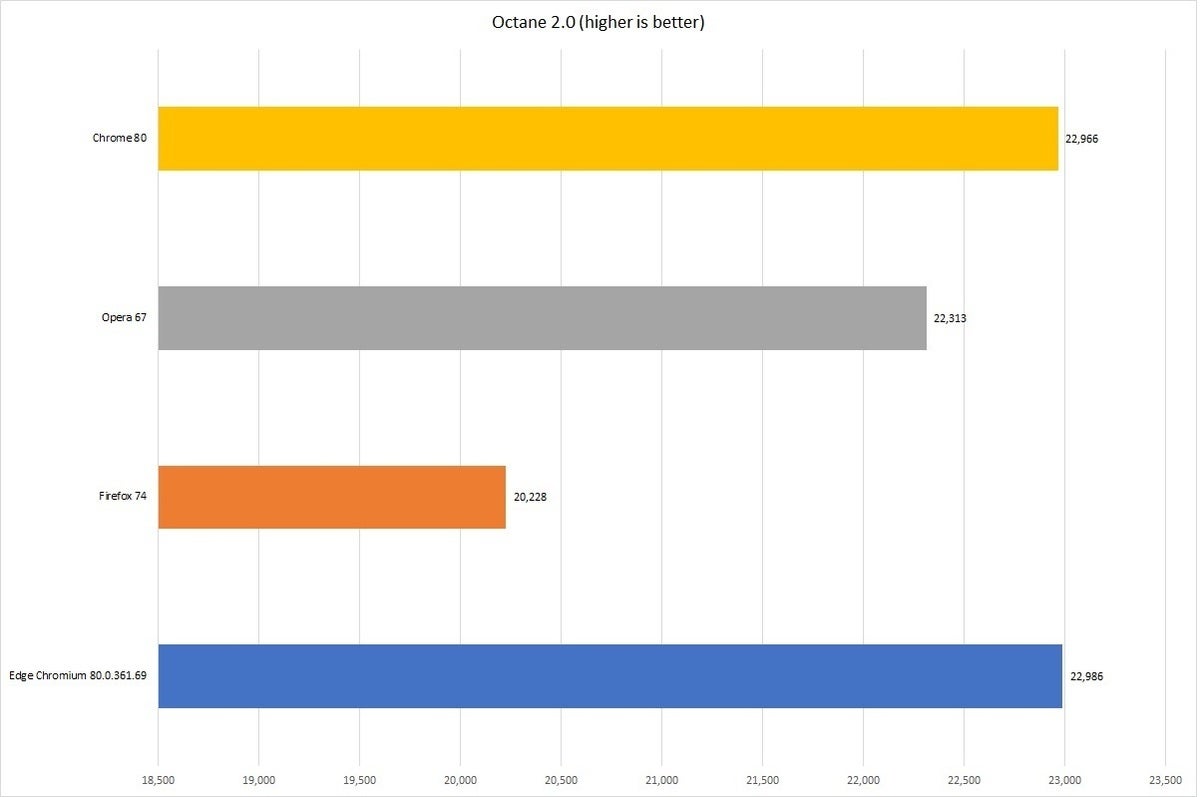 Katherine Stevenson / IDG
Katherine Stevenson / IDGMoving on to the more modern Speedometer test, which quickly iterates through a set of HTML 5-based to-do lists. Chrome came out on top, with Edge a close second and Opera nearly three points behind the leader. Firefox, meanwhile, was way behind team Chromium. It’s worth noting, however, that Speedometer scores for Chromium browsers were much higher just two years ago with 90+ scores being common.
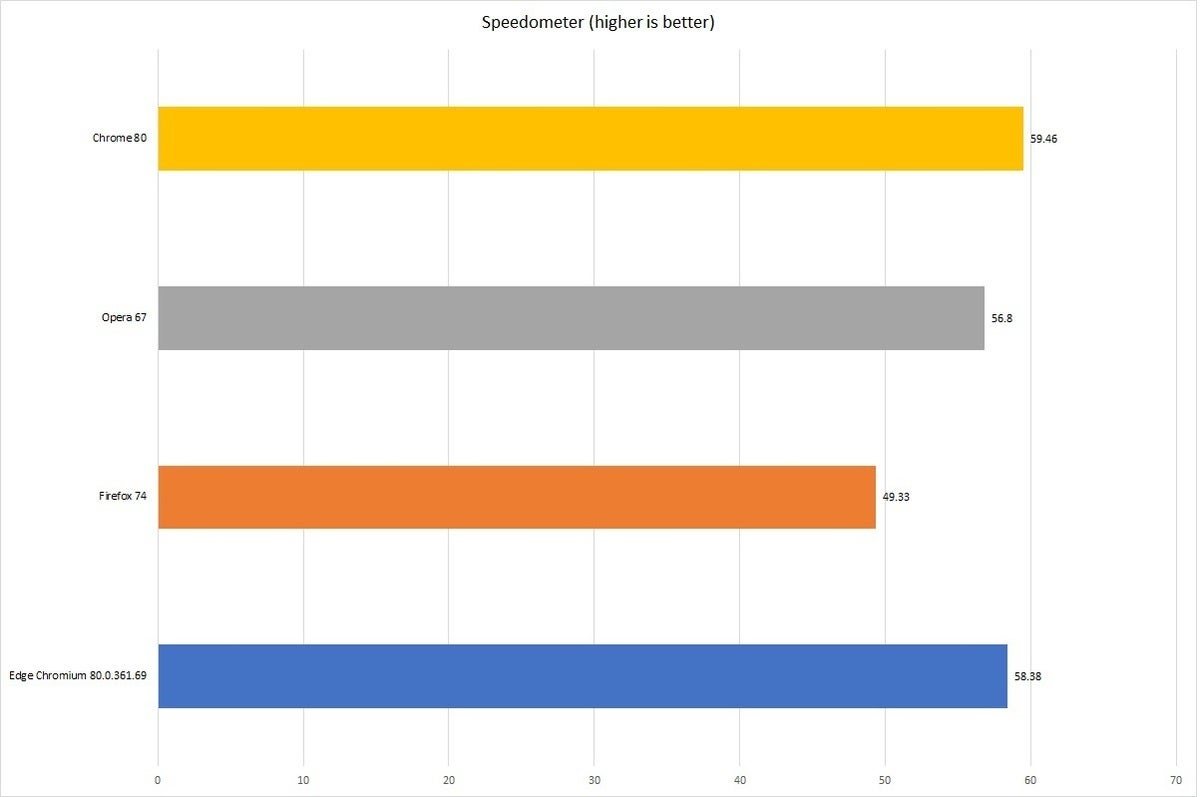 Katherine Stevenson / IDG
Katherine Stevenson / IDGThe numbers were much closer for WebXPRT 3, which looks very similar to WebXPRT 2015. The scores, however, are dramatically different. WebXPRT 2015 scores were commonly three hundred or more. With WebXPRT 3 the scores didn’t crack 150. That means comparing these scores to previous runs won’t give us any insights.
WebXPRT uses a wide number of web apps, from photo collections to online note-taking to data sets to score performance. This test is kind of like a PCMark for browsers, and to our mind, one of the most significant tests. Firefox came out on top here by a solid margin, with Edge coming in second followed closely by Chrome and Opera—the latter two tied for third. Again we’re seeing the Chromium effect on these scores.
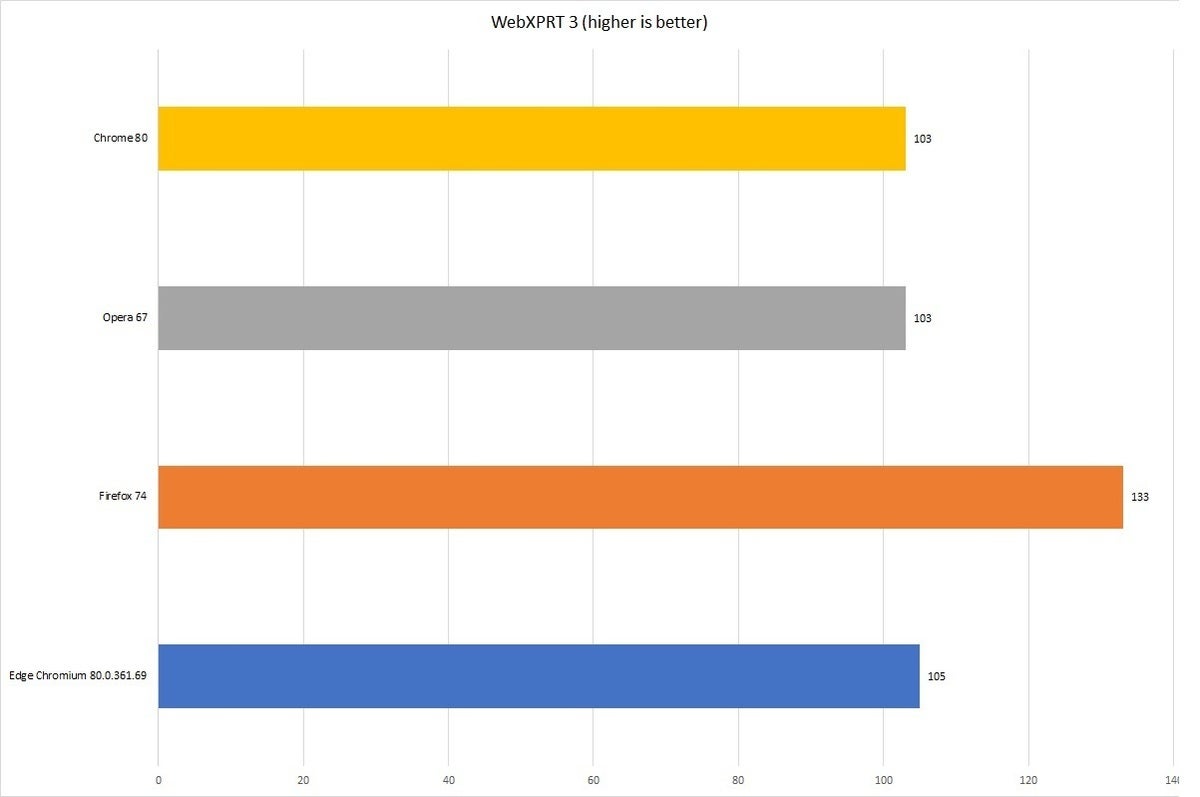 Katherine Stevenson / IDG
Katherine Stevenson / IDGFinally, we come to the memory and CPU tests. Slamming an average PC with 20 tabs of mostly media-rich sites all at once is going to chew up a good chunk of CPU and memory. Most of these browsers did not disappoint in that respect.
Edge was the best performer in CPU usage by a good margin. Opera came in second, followed hot on its heels by Chrome. Mozilla’s performance was a little better than last time, but still nowhere near what it needs to be.
This test is where each browser distinguished itself with finally at least three different outcomes.
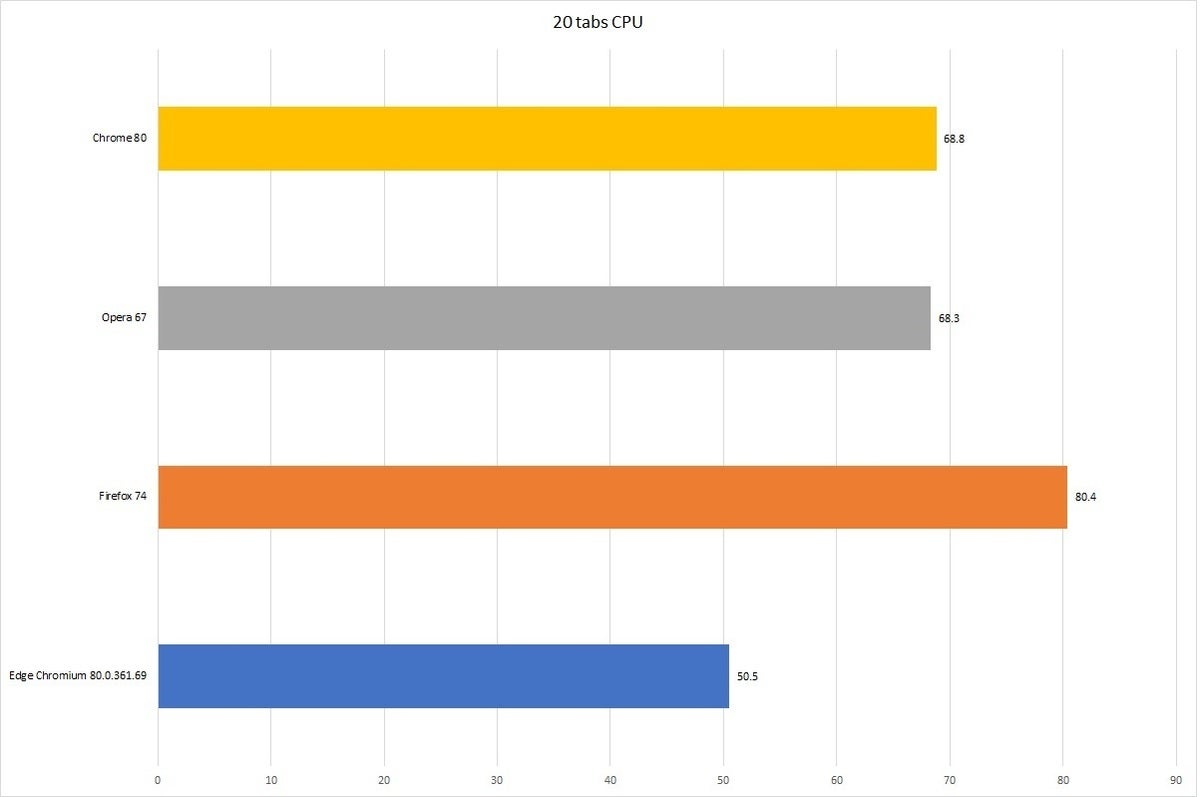 Katherine Stevenson / IDG
Katherine Stevenson / IDGEdge took the crown for memory as well, but Chrome wasn’t that far behind. Interestingly Opera was only marginally better than Firefox. Again, mostly different outcomes for each browser. The Chromium underpinnings matter less here.
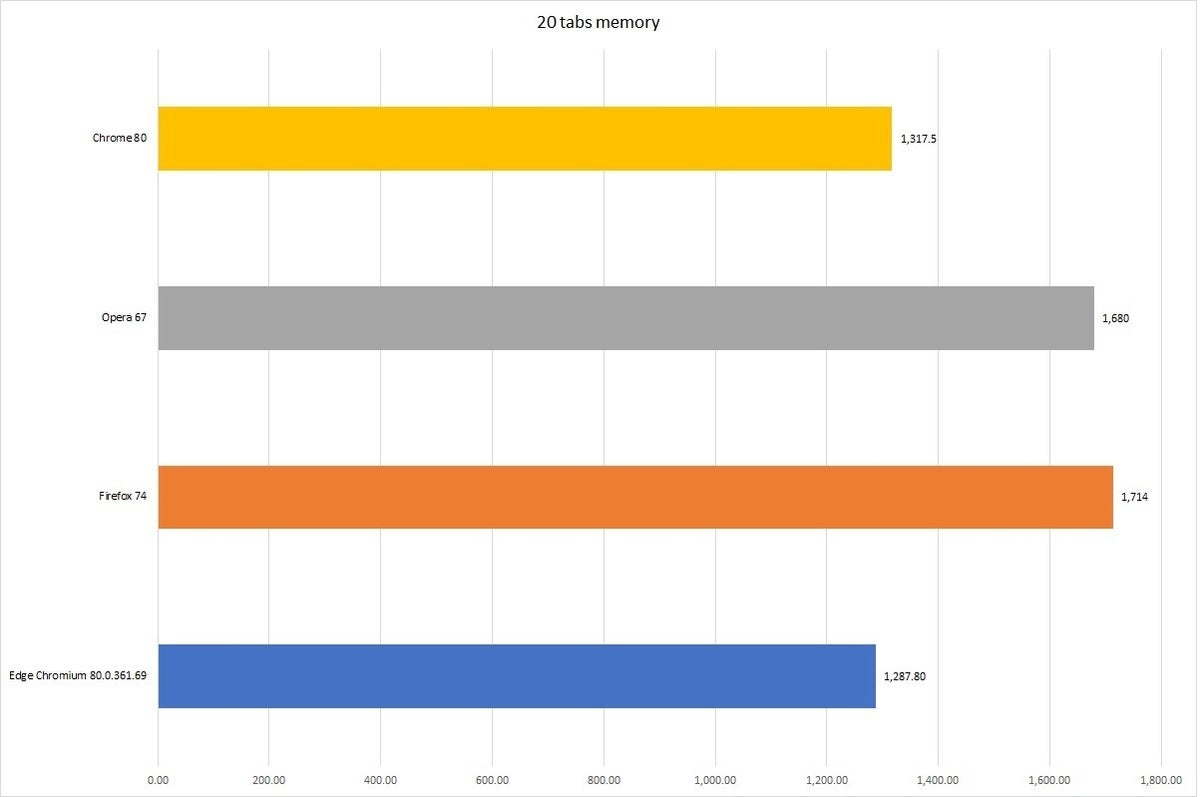 Katherine Stevenson / IDG
Katherine Stevenson / IDGAnd the winner is…
So who wins? Here’s how we see it.
Chromium Edge wins our top spot for a good showing in the stress test, as well as Octane 2.0 and JetStream 2. Chrome is a close second since its showing was consistently good and not far off of Edge. Really, this could’ve been called a tie as well, but the margins in some of the tests, while not wide, were enough to hand the crown to Edge.
We’re giving Firefox third place for strong showings in the old JetStream 1.1 test, as well as Sunspider and WebXPRT. We also feel compelled to be perhaps a little unfair and send some ire Mozilla’s way.
As the only non-Chromium mainstream browser it simply has to do better—especially in CPU and memory management. The new Quantum versions of Firefox are dramatically better than their predecessors, and as we said last time, if the stress test had gone better it might have taken the top spot or at least second place. PC users need a strong alternative choice to this Chromium soup we’re swimming in, and for that reason Firefox must up its game. To borrow a quote from Princess Leia, “Save us Mozilla, you’re our only hope.”
Opera comes in last for scoring either third or fourth place in every test we ran, save one. Granted, those losses were almost all a matter of degree, but it shows a consistent pattern.
To sum up: Edge is the best browser available right now, though Chrome’s performance is very close to it. Firefox is still a solid option if you want something that isn’t built with Chrome DNA. Finally, if you love Chrome but want something with a little more novelty then Opera is for you.
